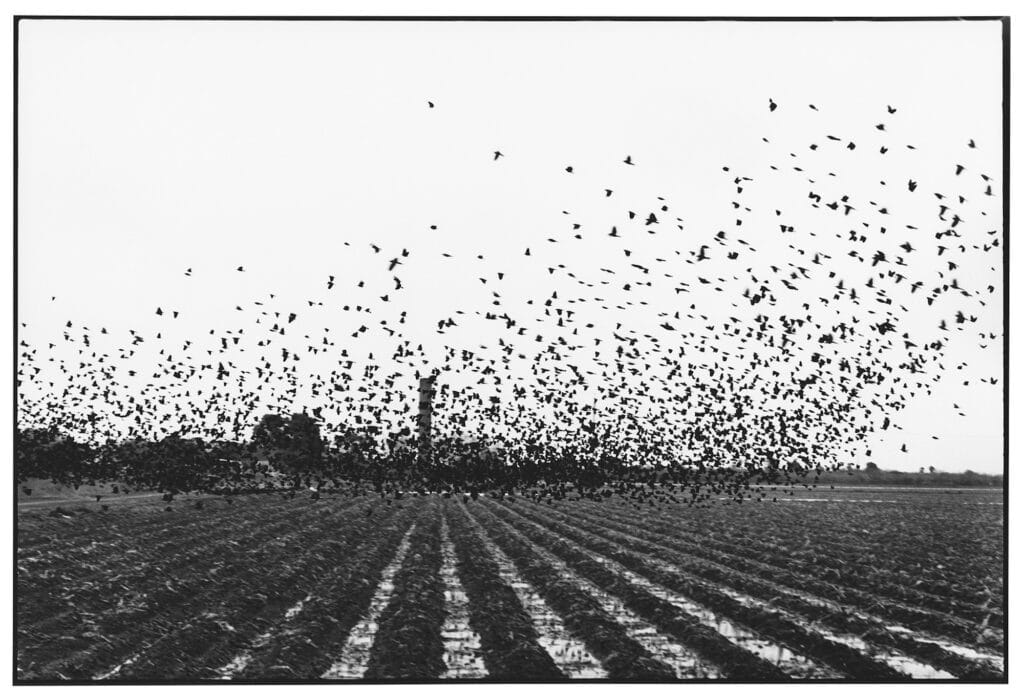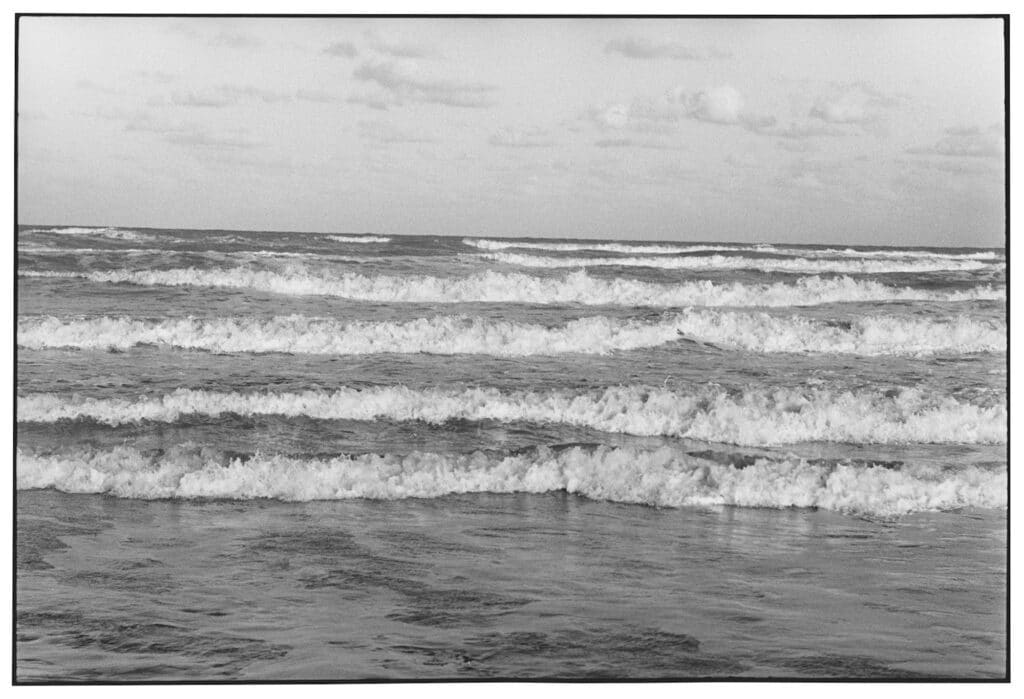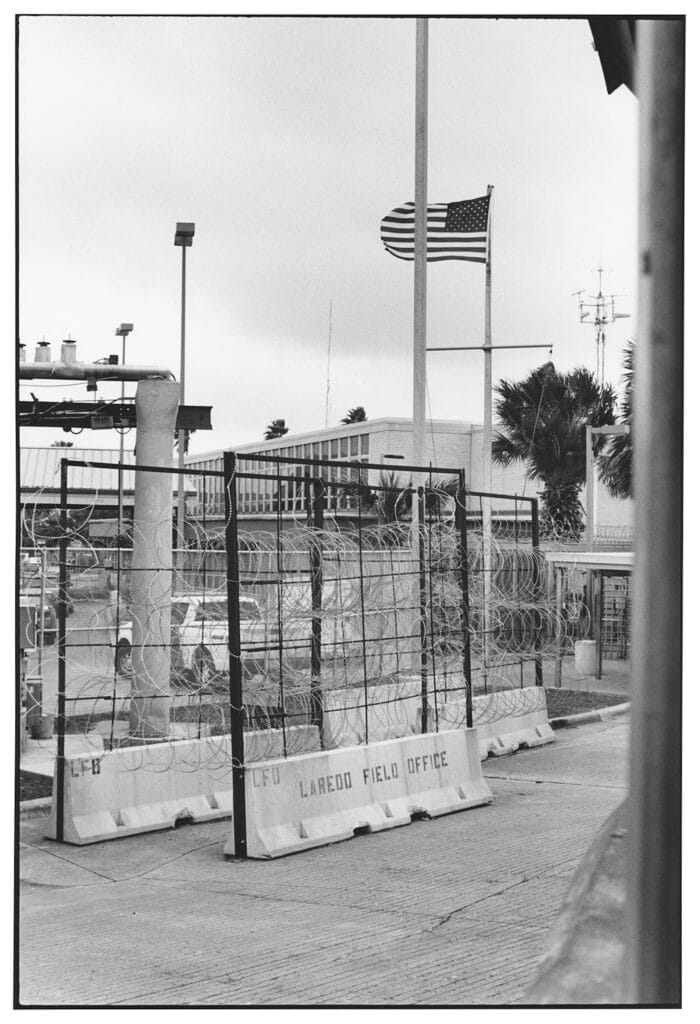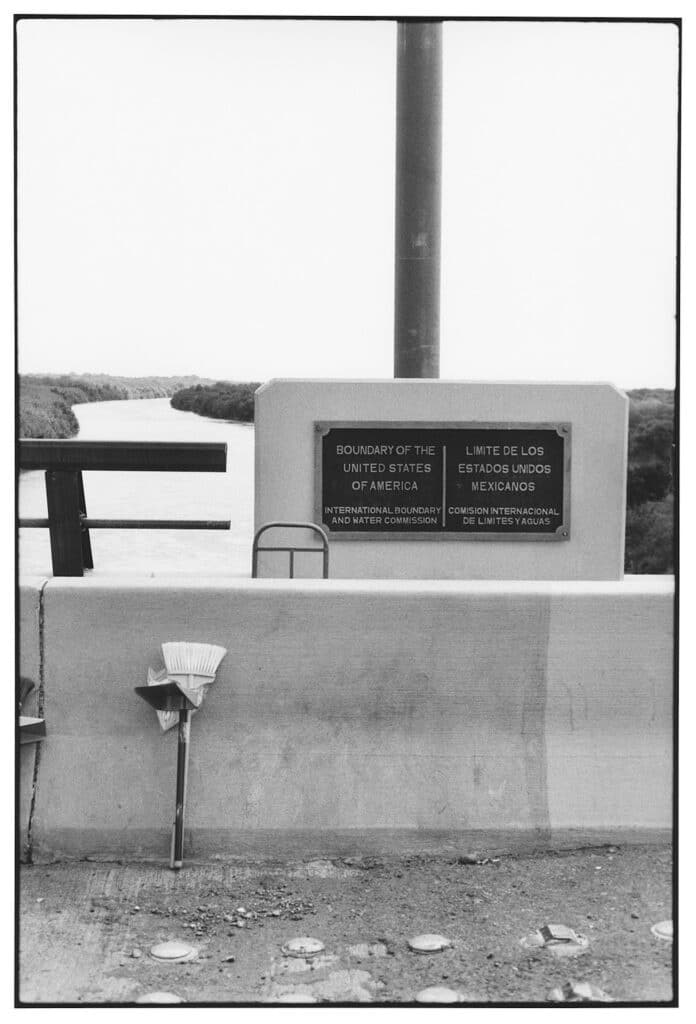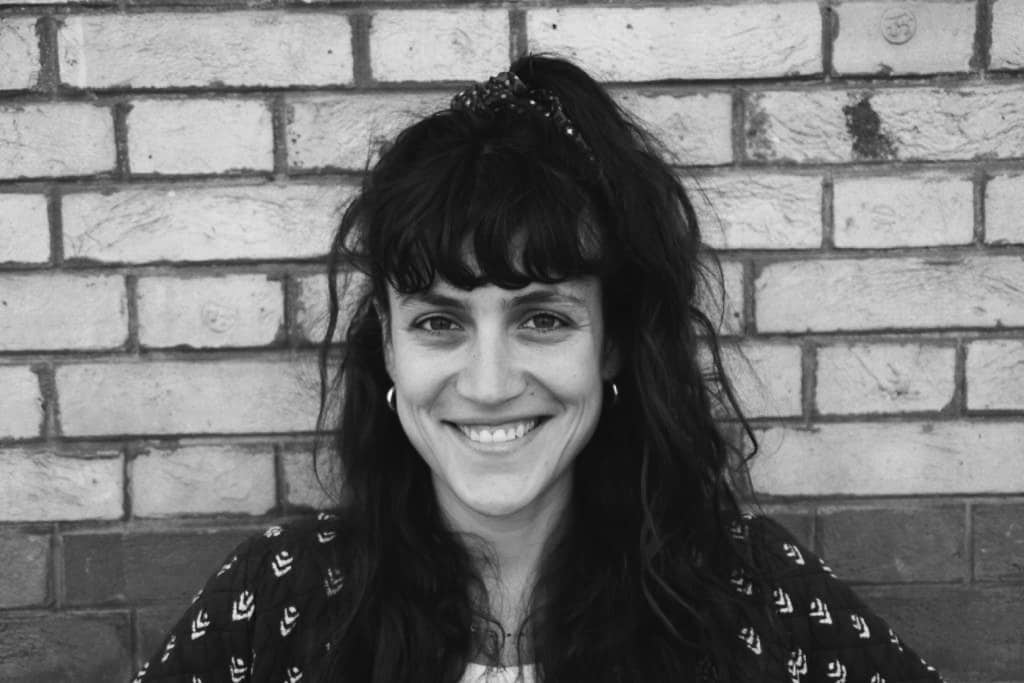Between the mouth of the Gulf of Mexico to the east and, 1,200 miles west, the cities of Ciudad Juarez, Mexico, and El Paso, TX, flows the Rio Grande (or Río Bravo as it is known in Mexico). American photographer Zoe Leonard has been interested in this border area separating Mexico from its American neighbor since 2016. The result is over four years’ worth of work exploring the political dynamics and issues in this key region.
Her eye doesn’t miss a thing: the cities and villages built along the riverbanks; agriculture, trade, industry; and deserted places where nature is reclaiming its rights… The photographer measures the proliferation of surveillance infrastructures (controlling the water flow, regulating of the transport of goods or the movement of people). The river is not just a river: it performs eminently political functions, which run against its nature as a natural element subject to the changing climate, seasons, and the passage of time.
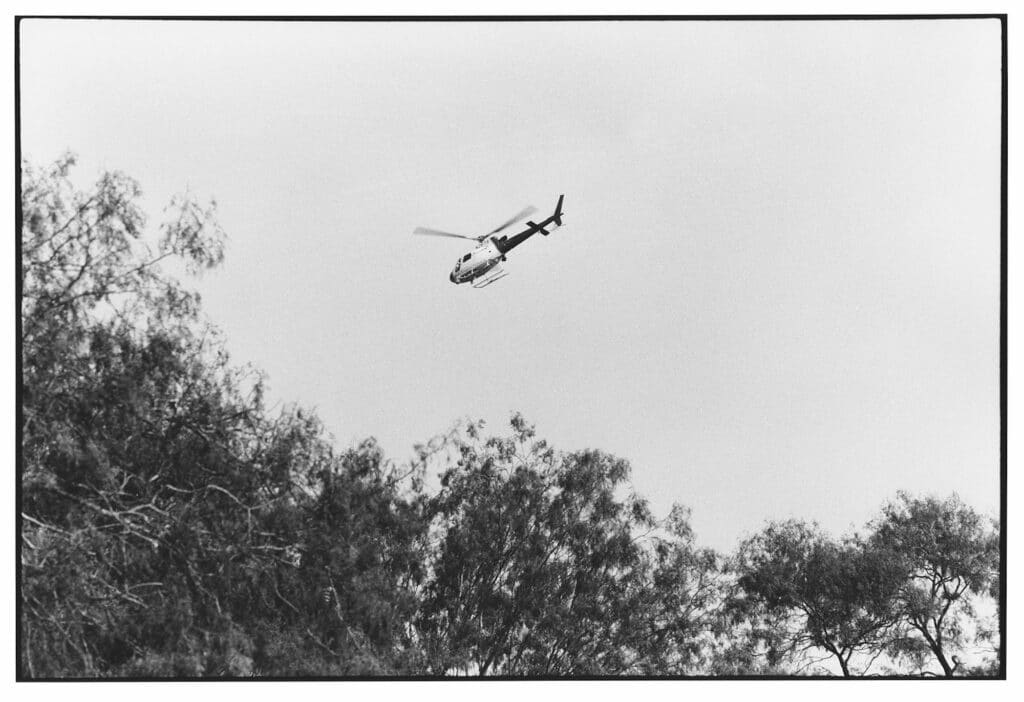
Zoe Leonard’s work also straddles the border between documentary photography and a more active gaze which asserts a physical position, the passage from one bank to the other, and multiple points of view and perspectives. A black border frames almost every photo—a reminder of the photographer’s presence which underscores the fact that our vision of the world is never neutral but always bordered by a frame (social, political, geographical).
At the same time, the photographs have no captions. Here, purification is the watchword. Black and white, vast and spacious rooms, tall bare walls… Emptiness seems to be the necessary condition for the emergence of political and social reflection. The same scene is often repeated in a series of four or five shots, like a contact sheet, sometimes with only tiny differences between, which, however, allow the viewer to retrace the movement, the unfolding of actions in time.
Zoe Leonard plays with contrasts, particularly heightened in this problematic region. Photos of barbed wire or sheet metal barracks sit next to deserted shores populated only by sparse palm trees battered by the wind. Endless lines of cars waiting at customs are juxtaposed with a shot of a small ferry providing passage to the other side. Swarms of birds swooping over a ruffled sea contrast with carefully plowed fields, or children playing at the outskirts of a village.
Ubiquitous watchtowers, helicopters, and other tools of human control confront the unruly nature and the overflowing river, which is both regulated by man and eminently free, governed by another set of laws. Unlike the reductive images often used to portray borders, Zoe Leonard’s photographs seek to capture the multiplicity of forces and influences at work (cultural histories, family ties, commercial and industrial interests, local flora and fauna). There are no portraits or closeups: distance from the subject is essential in an area where surveillance is already omnipresent.
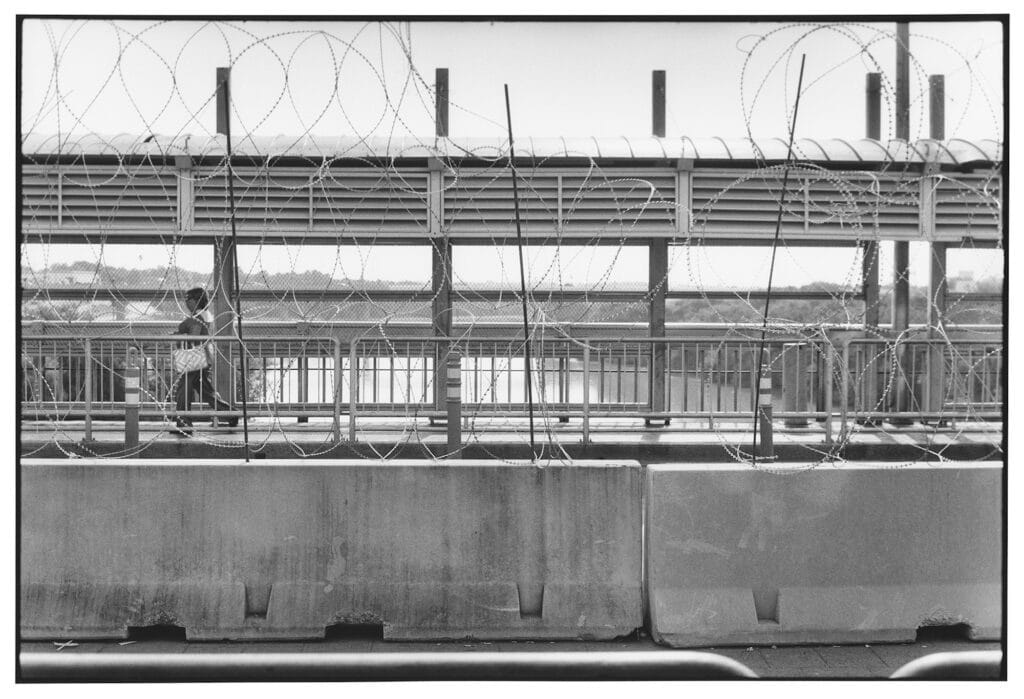
Because border areas are not binary, they are a third place where the interests of two countries mesh and intertwine. This is particularly evident at the U.S.–Mexico border, where the river crystallizes the issues and tensions of the era (intensification of surveillance related to migration flows against a backdrop of cartel wars and drug trafficking). Although it has nothing to do with human affairs, the river unwittingly structures them, becoming a patient, silent witness, at once opposing these zones and tying them together. This mass of water is invested with a political task that has nothing to do with its primary function: the river is a border despite itself.
In some states, such as Ecuador, India, or New Zealand, the notion of “legal personality” is sometimes granted to natural spaces that are deemed to be recognized as subjects of law. By recognizing the rights of the Mar Menor, a saltwater lagoon on the Mediterranean, the Spanish Senate extended this action to the European continent on September 21, 2022. In France, justice has yet to issue a ruling, but collectives of inhabitants regularly proclaim river rights in Corsica, in the Pyrenees, and in Nouvelle-Aquitaine.
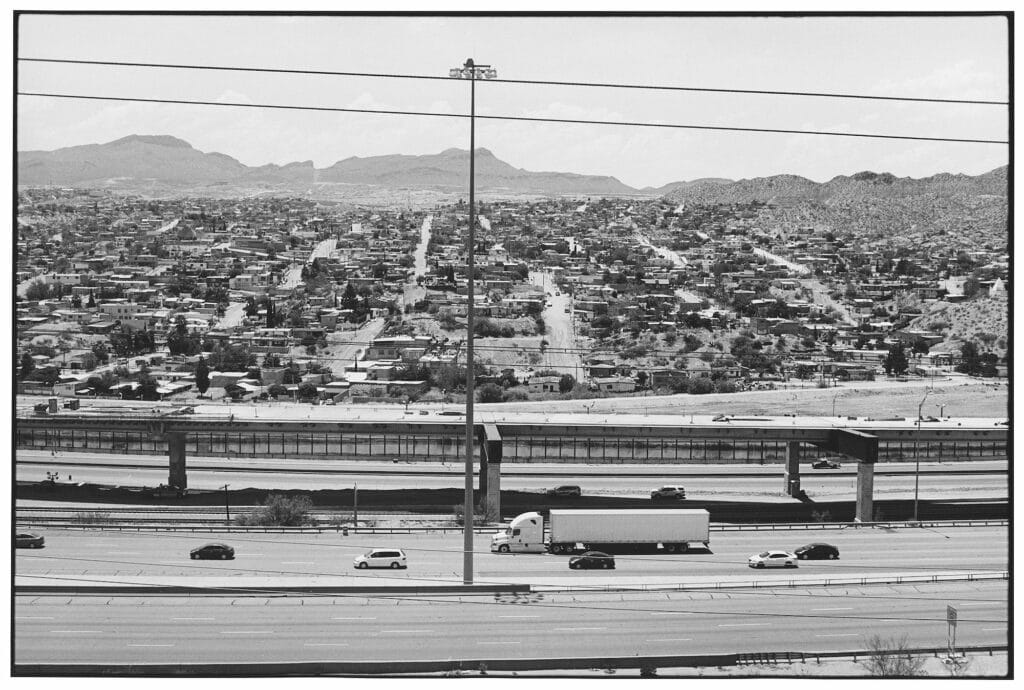
These developments are challenging the Western vision in which humans dominate nature and offer new ways of thinking about the interconnections between humans and life as a whole. Perhaps this is the only way for the Rio Grande to escape these contradictory conceptions, which see it as a wild river, a water reservoir managed by man, and a political frontier. Will it be next on the list?
Zoe Leonard, Al río / To the River. Musée d’Art Moderne, Paris. From October 15, 2022 to January 29, 2023

